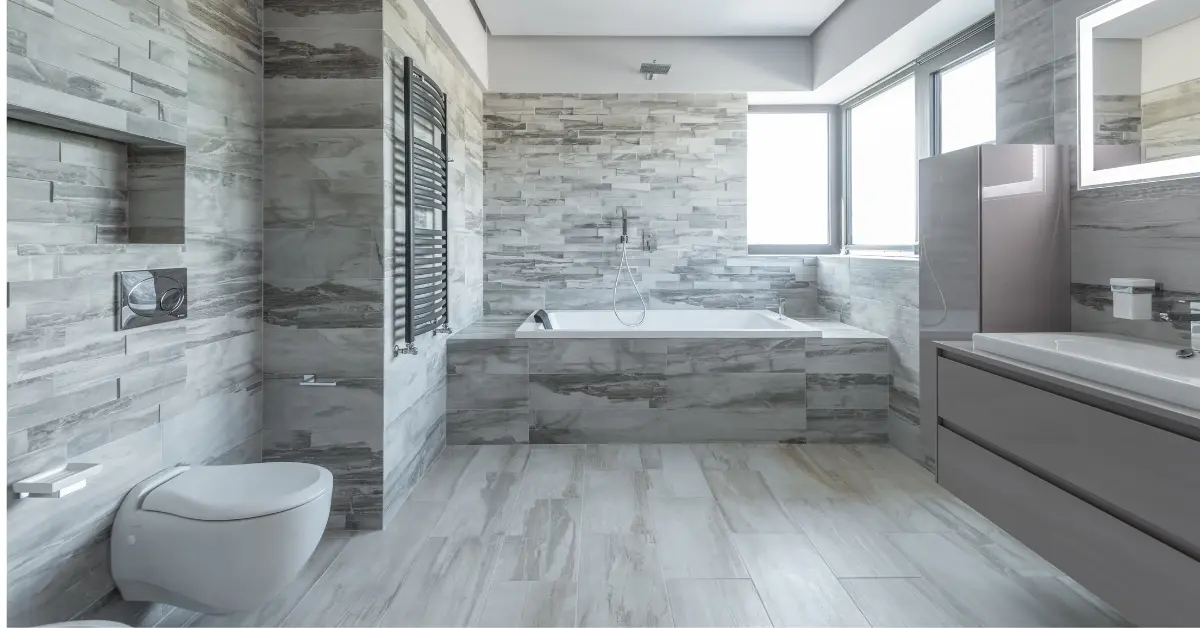
Tile Calculations Made Easy: Find The Right Number Of Tiles Needed For Any Space
Introduction
Having the right cost estimate while tiling a space is very crucial, be it a cosy bathroom, an expansive living room or a luxurious commercial space. Too few tiles can hinder the design theme, and too many tiles can inflate the budget.
For each of your projects, you need the correct estimate of the tiles required to give the space a “WOW” look. But the question arises, “How to calculate the number of tiles?” Well, it’s simpler than you think.
In this blog, we’ll show you the tile calculation formula and walk you through the wall and floor tile estimation process. Let’s dive in and break it down.

Why Tile Calculations Matter
Whether you are a builder, architect, contractor or tile dealer, having the right estimate on the number of tiles needed for a room is all that matters besides choosing the perfect colour, finish, and texture.
- It’s not just about quantity—it’s about saving time, money, and hassle.
- Having too many tiles lying on the site can clutter up and be an obstacle to tile installation.
- Too few tiles pose a threat to the design element if the store is out of stock. Then procuring the same type of tile becomes another headache and costs money.
How To Calculate The Number Of Tiles: The Formula
Just use this simple formula to calculate the number of tiles needed for a room.
-
Measure The Area Of The Space/Room
First, you need to determine the total area of the space you’re tiling. If you need a floor tile estimation, measure the length and width of the room. For wall tile calculation, measure the height and width.
Area Of Space = Length × Width
1. Calculate The Tile Area
Now, measure the dimensions of the tile and calculate its area. For example, for a wall or floor tile whose dimensions are 30 cm x 30 cm, the tile area is:
Tile Area = Length Of Tile × Width Of Tile
In this case, 30 cm × 30 cm = 900 cm² or 0.09 m²
2. Tile Measurement Formula
Now let’s do some basic maths. Divide the total area of the space by the area of a single tile, and you’ll have the exact number of tiles that you need to install in the room.
Number Of Tiles = Total Area Of Space
Area Of A Single Tile
For example, if the room is 10 square metres and your tile covers 0.09 square metres, you’ll need:
Number of tiles needed = 100 / 09 = 111.1
Round it up to 112 tiles.
3. Adjusting For Wastage
Let’s be honest—construction always has its margin of error, right? That’s why you should always account for wastages in terms of cutting, tile breakage during fitting, or poor fit. Typically, a 5–10% wastage ratio is considered a good rule of thumb.
For example, if you need 112 tiles for the space, you should add an extra 10%:
Total tiles needed = 112 + (10% × 112) = 123 tiles
It’s better to have a few extra tiles than to run out halfway through a job. This is especially important if the tiles you’re installing are from a batch that may not be available later.

Tile Calculator For Floor vs Wall
While the basic tile calculation formula is the same for both floors and walls, there are a few specific considerations to keep in mind.
1. Floor Tile Estimation
Floor tiles are generally laid in a grid-like pattern, so the number of tiles needed for floors is easier to calculate. Since you’ll likely be covering the entire floor surface, the tile quantity calculator will give you a direct estimate based on the room’s floor area.
But remember, floors often come with corners, irregular shapes, and fixtures like sinks or toilets. Measure the clear areas and subtract the spaces where tiles won’t be installed.
2. Wall Tile Calculation
When calculating wall tiles, it’s important to account for any openings in the wall, like windows and doors. You only need to tile the actual wall area, not the area of the doors or windows. Measure the height and width of each opening and subtract them from the total wall area.
For example:
- Wall height: 3m
- Wall width: 5m
- Window size: 1m x 1m
Wall area = 3 × 5 = 15 m²
Window area = 1 × 1 = 1 m²
Tileable wall area = 15 m² − 1 m² = 14 m²
From there, you can calculate the number of tiles just like we did for the floor.

Using A Tile Quantity Calculator
These complex calculations seem daunting, don’t they? You are probably thinking, “Can’t we just skip all the calculations and use a calculator?”
The answer is: absolutely! Many tile manufacturers offer online tile calculators. These handy tools can help you determine the exact number of tiles needed for both floors and walls, factoring in the room’s dimensions and tile size.
These calculators are great for quick estimates. Just fill in your room measurements, tile size, and the wastage percentage, and the calculator does the math for you.
Conclusion
Always double-check your measurements because mistakes in measuring can lead to costly errors. Also, if you’re laying the tiles diagonally, you’ll need extra tiles due to the cuttings. While we didn’t account for it in the tile calculation, don’t forget to consider the marginal area that’ll be covered by grout and adhesive.
Whether you’re an architect, contractor, or tile dealer, tile calculations don’t need to be a daunting task. With a basic understanding of how to calculate the number of tiles, you can save yourself and your client both time and money. By measuring your space correctly, using a tile calculator, and accounting for waste, you’ll be able to select the right amount of tiles with confidence.
Want to explore Spenza Ceramics’ vast range of premium tiles for your next project? Visit our website and make your tiling process even smoother with our top-quality products.
For More info Follow Our Instagram page.
Frequently Asked Questions
1. How do I calculate the number of tiles I need for a room?
Simply measure the area of the space, calculate the area of a single tile, and divide the room’s total area by the tile area. Don’t forget to adjust for wastage!
2. Why should I account for wastage when calculating tiles?
Wastage accounts for mistakes in cutting, tile breakage, or poor fit. Adding 5-10% extra ensures you don’t run out mid-project.
3. Can I use a tile calculator instead of doing the math myself?
Yes! Online tile calculators make estimating tiles much easier. Just input your room dimensions, tile size, and wastage percentage for a quick result.
4. How do I adjust tile calculations for irregular room shapes?
Measure the clear areas, and subtract spaces where tiles won’t be installed, like corners or fixtures. This gives a more accurate estimate.
5. Do I need more tiles for diagonal installations?
Yes, laying tiles diagonally requires additional tiles due to extra cuts. Always factor this in when estimating for diagonal layouts.

Explore our full range of Tiles
Find the perfect tiles for your area with our huge range of styles, colours, and finishes, No matter you are looking tiles for kitchen, bathroom, parking, exterior or interior spaces, we have it all.
Shop Now








